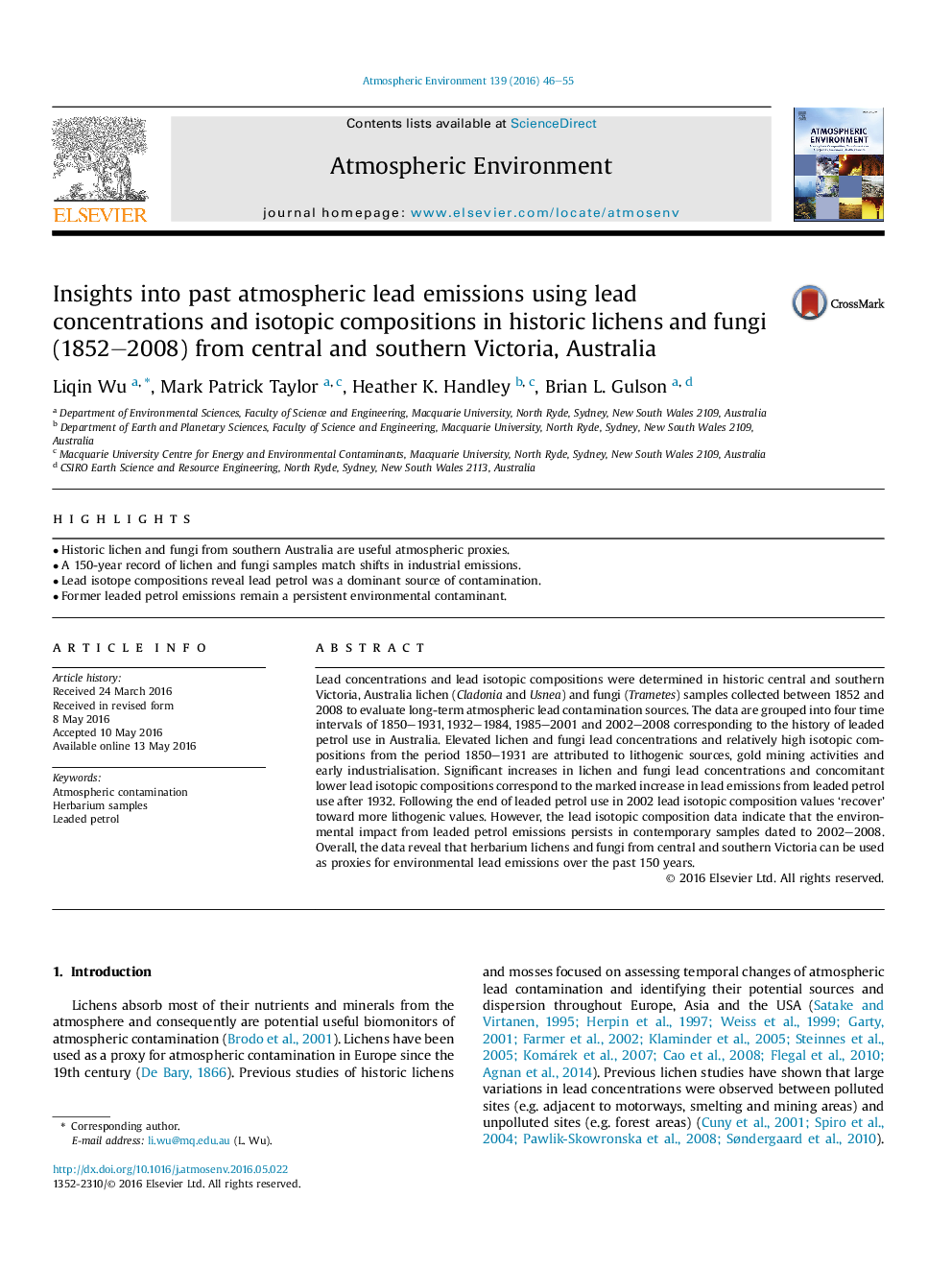| کد مقاله | کد نشریه | سال انتشار | مقاله انگلیسی | نسخه تمام متن |
|---|---|---|---|---|
| 6336296 | 1620335 | 2016 | 10 صفحه PDF | دانلود رایگان |
- Historic lichen and fungi from southern Australia are useful atmospheric proxies.
- A 150-year record of lichen and fungi samples match shifts in industrial emissions.
- Lead isotope compositions reveal lead petrol was a dominant source of contamination.
- Former leaded petrol emissions remain a persistent environmental contaminant.
Lead concentrations and lead isotopic compositions were determined in historic central and southern Victoria, Australia lichen (Cladonia and Usnea) and fungi (Trametes) samples collected between 1852 and 2008 to evaluate long-term atmospheric lead contamination sources. The data are grouped into four time intervals of 1850-1931, 1932-1984, 1985-2001 and 2002-2008 corresponding to the history of leaded petrol use in Australia. Elevated lichen and fungi lead concentrations and relatively high isotopic compositions from the period 1850-1931 are attributed to lithogenic sources, gold mining activities and early industrialisation. Significant increases in lichen and fungi lead concentrations and concomitant lower lead isotopic compositions correspond to the marked increase in lead emissions from leaded petrol use after 1932. Following the end of leaded petrol use in 2002 lead isotopic composition values 'recover' toward more lithogenic values. However, the lead isotopic composition data indicate that the environmental impact from leaded petrol emissions persists in contemporary samples dated to 2002-2008. Overall, the data reveal that herbarium lichens and fungi from central and southern Victoria can be used as proxies for environmental lead emissions over the past 150 years.
Journal: Atmospheric Environment - Volume 139, August 2016, Pages 46-55
